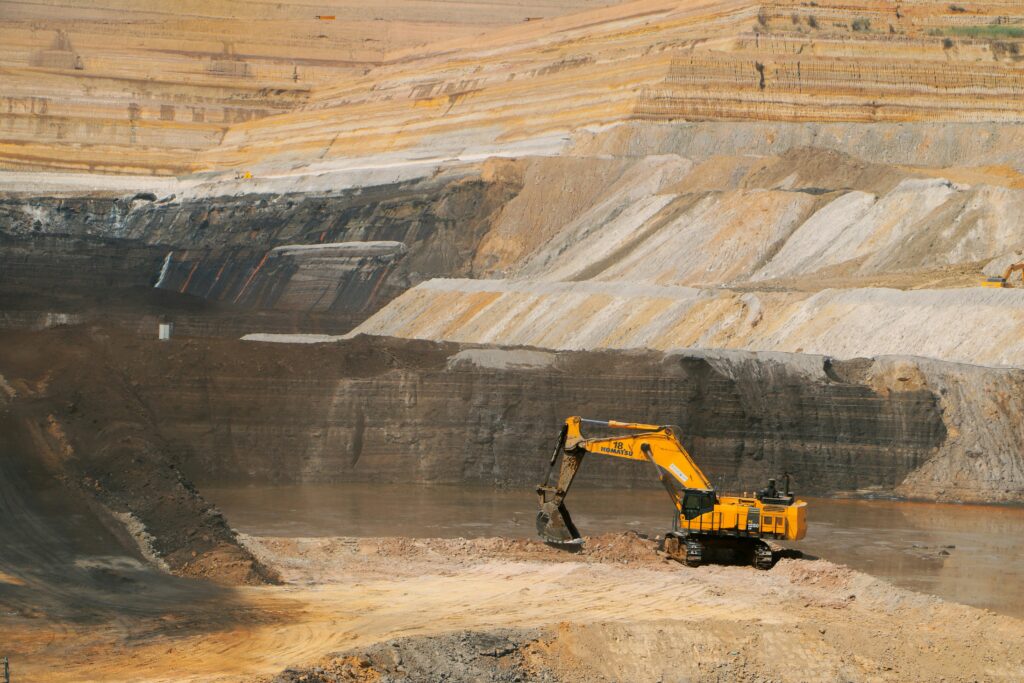Global Raw Materials – Metal: Trends and Forecasts 2025

The metals and minerals market is projected to grow from USD 8.43 trillion in 2024 to USD 8.95 trillion in 2025, reflecting a 6.1% CAGR. Looking further ahead, forecasts suggest continued expansion to nearly USD 10.7 trillion by 2029. Within this vast and diverse industry, iron ore and steel, copper, and aluminum represent the largest market segments, while critical and battery metals such as lithium, nickel, and cobalt are set to experience the fastest growth, fueled by rising demand from electric vehicles, renewable energy, and energy storage technologies.
Asia-Pacific, led by China, dominates global consumption and refining capacity across most metals, particularly steel, iron ore, and copper. This regional concentration means that shifts in Chinese demand, industrial policy, and production cycles have an outsized influence on international prices and trade flows.
Several long-term forces are reshaping the sector. The transition to clean energy and widespread electrification is driving robust demand for copper, nickel, and lithium, while China’s efforts to balance steel output continue to affect global supply chains. At the same time, the industry is undergoing greater consolidation through mergers and acquisitions in base metals, as players seek scale and security of supply. Growing regulatory and investor pressure to decarbonize production is adding another layer of transformation, pushing producers to adopt cleaner technologies. Recent waves of investment and large M&A activity highlight how companies are repositioning to capture growth while adapting to evolving sustainability expectations.
Global Market Size of Selected Metals
The global metals and minerals market was valued at approximately USD 8.43 trillion in 2024 and is projected to grow steadily in 2025, with single-digit percentage increases expected.
- Iron ore / steel complex: The iron ore market is currently estimated at USD 275–279 billion (2023–2024), with growth expected over the coming years. Forecasts indicate potential rebounds into the high hundreds of billions by the early 2030s, largely influenced by global steel production and Chinese industrial policies.
- Copper: Market estimates for 2024 range between USD 240–333 billion, with long-term growth supported by electrification, renewable energy expansion, and electric vehicle adoption. Forecasts generally anticipate mid-single-digit CAGRs.
- Aluminum: Valued at approximately USD 178–180 billion in 2024, aluminum demand remains robust, driven by transportation, packaging, and construction. The market is expected to grow at a steady mid-single-digit pace.
- Nickel: Estimated at USD 41–43 billion in 2024, nickel demand is heavily influenced by its role in EV batteries, particularly class-1 nickel. Growth forecasts point to medium-to-high CAGRs in the 6–8%+ range over the next decade.
- Zinc: The zinc market stands at USD 20–25 billion (2023–2024), supported by stable demand from construction and galvanization. Growth is expected to remain in the low-to-mid single-digit range.
- Lithium: Currently valued at USD 28–37 billion in 2024, lithium is one of the fastest-growing metals. Driven by surging EV and grid storage demand, the market is projected to expand three- to five-fold by 2030, with forecasted CAGRs in the mid-teens.
Region wise market of these raw materials
Asia-Pacific
Asia-Pacific is the largest regional market for metals and minerals, valued at roughly USD 265.6 billion in 2024. The metal casting industry alone stood at about USD 107.5 billion in the same year and is projected to reach USD 181.3 billion by 2033. The region also commands nearly 38.5% of the global metal fabrication equipment market, reflecting its dominance in both raw materials and downstream processing.
Europe
Europe’s metals sector is valued at around USD 180.9 billion in 2024 for raw steel and semi-finished products. The regional metal packaging market is expected to reach nearly USD 41 billion in 2025, while Europe also accounts for over 30% of the global hard metals market, valued at about USD 492.7 million.
North America
North America, together with Europe, plays a leading role in advanced and specialized metal segments. The North America–Europe metal powder market was worth USD 3.9 billion in 2021 and is forecast to nearly double to USD 7.3 billion by 2030, highlighting its focus on high-performance materials and critical supply chain development.
Latin America & Africa
Latin America and Africa are critical suppliers of raw materials, including copper, iron ore, lithium, cobalt, and manganese. While comprehensive combined valuations are limited, these regions represent some of the fastest-growing supply hubs. Ongoing investments in mining projects and upstream processing facilities are steadily increasing their share of the global metals market.
Key Market Drivers
Electrification and Renewables
The global shift to clean energy is fueling strong demand for copper, lithium, nickel, and other critical metals used in conductors, battery cathodes, wiring, and grid infrastructure. Battery metals in particular are recording the fastest growth rates.
Energy Transition and Decarbonization
Stricter environmental goals are reshaping production methods, with a gradual move from traditional blast furnaces to electric arc furnaces and green hydrogen. This is creating growing premiums for low-carbon metal products while putting pressure on high-emission producers.
China’s Policy Cycles and Trade Flows
China’s fiscal stimulus, property market health, and export patterns remain key swing factors for global metals. Shifts in Chinese steel exports or demand levels can quickly influence international prices and trade balances.
Supply Consolidation and M&A
Large-scale mergers and acquisitions in copper, nickel, and other critical minerals are reshaping the supply landscape. Consolidation is strengthening investment signals and altering competitive dynamics across the industry.
Geopolitics and On-Shoring
Governments are promoting domestic refining, critical mineral development, and strategic stockpiles to reduce import dependence. This is increasing capital investment in mining and processing across new and non-traditional regions.
The metals and raw materials sector are evolving into a strategically critical market, where long-term growth, technological shifts, and geopolitical dynamics intersect. For financial firms, this environment favors proactive engagement—from identifying high-potential investments in battery and critical metals to structuring deals that capitalize on emerging supply chains and decarbonization trends.